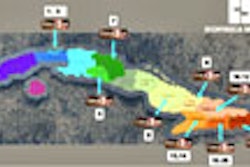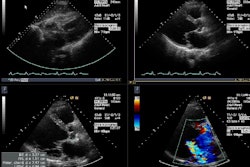Huge volumetric CT datasets can strain any PACS network, but for the Seoul National University College of Medicine in South Korea, a miniPACS has helped lighten the data management load.
Volumetric datasets are large and rarely retrieved once they're interpreted, said Dr. Kyoung Ho Lee, who spoke during a scientific session at the 2005 Society for Computer Applications in Radiology (SCAR) meeting in June.
Since these datasets are accessed only by a limited number of users, the institution thought that a low-cost miniPACS network with smaller online storage capacity and fewer concurrent user sessions than the main PACS could help alleviate the data management crunch.
At the university, volumetric datasets from every CT study are stored on a miniPACS (Impax Basix, Agfa HealthCare, Mortsel, Belgium) and routed to the relevant radiologists at 3D workstations based on predefined rules, Lee said. A second thick-section dataset is stored in the main PACS network (Impax Enterprise, Agfa).
The CT data acquisition, image reconstruction, and transmission of each dataset to the different PACS networks are performed automatically following predefined protocols that are programmed into the CT scanner, Lee said. Technologists routinely perform standardized 3D postprocessing using the routed volumetric datasets. As part of the process, the 3D workstations automatically deleted older studies from local disks to maintain space for new studies.
As a result of the new workflow, CT exam data stored on the main PACS network now includes a thick-section axial dataset, standardized 3D images produced by the technologist, 3D images added by the radiologist, and scout and bolus-tracking images used for planning, Lee said. The miniPACS stores the thin-section volumetric dataset.
In a sample two-week period at the university's hospital in February 2004, 870 CT exams totaling 26.8 GB (compressed) were stored on the main PACS. Of these exams, the volumetric datasets of 604 studies totaling 78.1 GB (compressed) were stored on the miniPACS; radiologists accessed 148 (24.5%) of these volumetric datasets at least once.
During a five-month period from October 2003 to February 2004, 1.48 terabytes (TB) of image data from various modalities were stored on the main PACS. Of this figure, 8,976 CT examinations contributed 278 GB, Lee said.
At the same time, volumetric datasets from 6,193 exams were stored on the miniPACS, taking up 738 GB of space. These datasets formed 73% of the total CT data (0.99 TB), and 32.8% of the total imaging modality data, according to Lee.
At the end of the five-month period, all image data in the main PACS was kept online. The miniPACS kept 1,892 exams (about 1.1 months of data) of 245 GB in online storage, with 5,162 exams of 650 GB (approximately 2.9 months) available in nearline storage.
"Our two-tier PACS offers an effective method of archiving every volumetric dataset and delivering it to radiologists, at least during the transitional period until a more ideal system becomes commercially available and affordable," Lee said.
By Erik L. Ridley
AuntMinnie.com staff writer
October 6, 2005
Related Reading
Grown-up decisions: When is MDCT the best choice in children? September 30, 2005
Cuba's IMAGIS brings PACS power to the people, September 29, 2005
Cardiac PACS pace quickens, September 22, 2005
Web-based applications ease PACS, EMR integration, August 4, 2005
Lossy compression wins over Canadian radiologists, July 21, 2005
Copyright © 2005 AuntMinnie.com




















